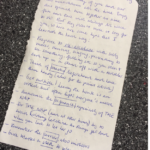Take The Time
Fathers helping fathers take parental leave.
With a new baby, there are two essential tasks: taking care of him and getting to know him. Looking after babies involves relatively simple skills. You need to feed them, interact with them, comfort them when they’re upset, keep them reasonably clean and give them a safe, comfortable place to sleep. Mind you, the skills may not seem so simple the first time you’re confronted with a little mass of waving arms and kicking legs who, upon being lowered to the change table, reaches desperately as if you had dropped him into an abyss. However, baby care is easily learned by almost anyone who is willing to (or has to) get in there and do it.
Getting in there and doing it also helps with your other task, which is getting to know him. In fact, the two are interdependent: You get to know your baby partly by handling and caring for him. At the same time, knowing him makes you more attentive, which enables you to better understand and respond to his needs. And all of this helps you bond with your baby.
I remember asking a friend once—this was before I had kids—how he knew what the baby wanted. “He tells you,” my friend replied. I had no idea what he meant. How can a baby tell you? But now that I’ve looked after three babies of my own, I understand. The baby does tell you, but not with words or gestures or even looks that pass between you. It’s more that, as you spend time together, you learn to read the baby’s cues—his body language or his cries or coos in various situations. Whatever you might think of your wife’s apparent instinct for this, it’s an acquired skill that requires time and togetherness.
Part of developing the ability to read cues involves fathers and babies becoming comfortable together. I mean physically comfortable. Again, this takes time and daily caregiving helps because changing, dressing, bathing and comforting all require you to touch the baby. But there’s a particular level of physical contact that comes when parents and babies are just hanging out, and getting to this place means finding the way your bodies fit together. Each one of my kids seemed to want me to hold him differently, and it usually took a little time for us to figure out what that was. Quiet, relaxed time together helps you find this fit.
I have a half-baked theory that when parents and babies are together like this, little invisible love chemicals pass between them. Whether that’s true or not, the feeling you get from this kind of physical contact teaches you that babies give something back. Yes, they can be a lot of work, but there is a wonderful payoff that comes from having his body language tell you, “I feel good with you. I want to be with you.” There is no better feeling in the world.
This article was originally published in Today’s Parent.




